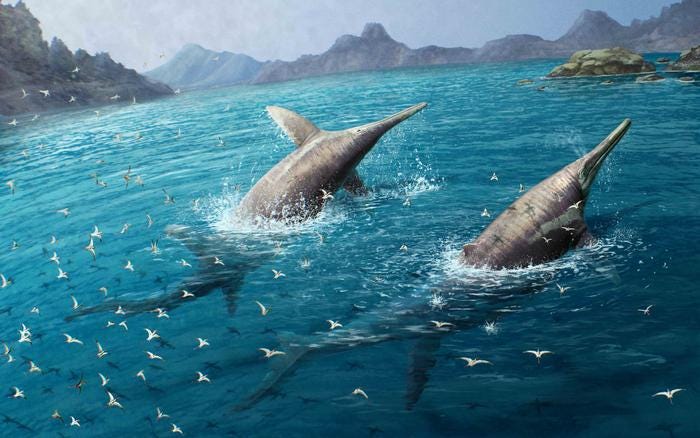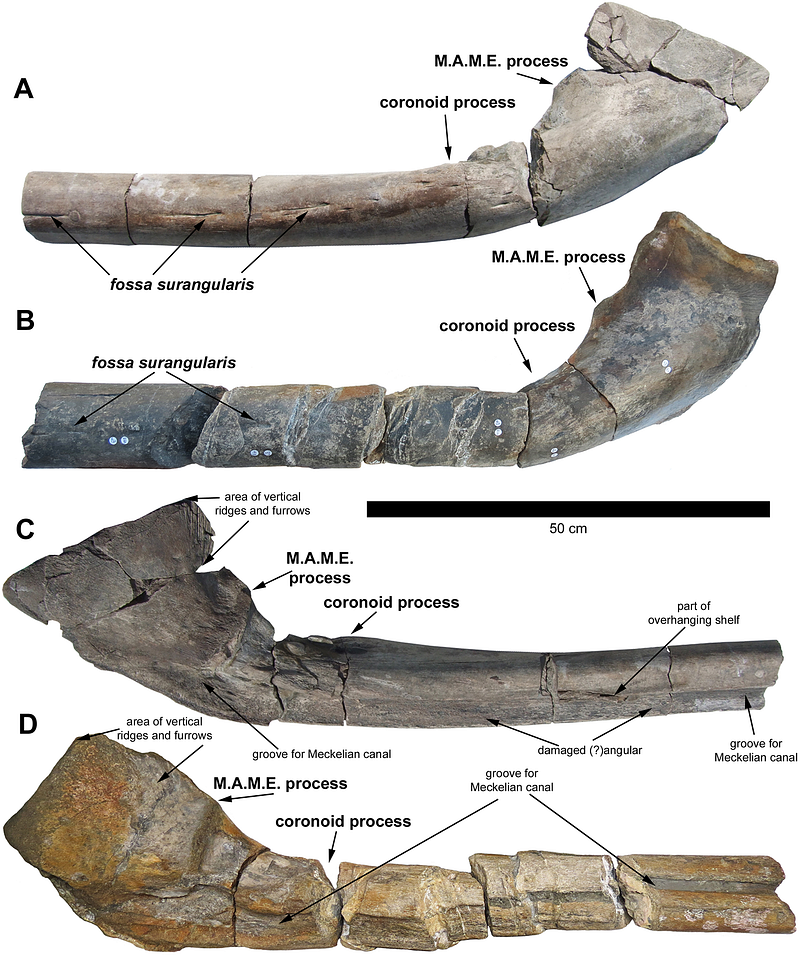Unearthing the Ocean's Giants: The Remarkable Find of an 11-Year-Old
Written on
Chapter 1: Childhood Curiosity Unleashed
During my childhood beach outings, my sister had a unique habit of digging up and burying bones in the sand. Our mother interpreted this as a troubling sign of grief, stemming from our father's passing when my sister was just a year old. After consulting a child psychologist, my mother learned that these actions were not expressions of sorrow but rather a testament to my sister's vibrant curiosity and fearless exploration of the world around her.
Children have an extraordinary ability to uncover pieces of history. In 2006, youngsters from the Hamilton Junior Naturalist Club in New Zealand discovered a fossil of a giant penguin that was 30 million years old. Similarly, in 2018, an 8-year-old Swedish girl named Saga found a 1,500-year-old sword while at her family’s lakeside retreat. In 2019, 12-year-old Jackson Hepner uncovered a mammoth tooth in a creek. Just two years later, 4-year-old Lily Wilder spotted a fossilized dinosaur footprint dating back 220 million years on a beach in South Wales. In May 2023, another 8-year-old from Norway, Elise, picked up what she thought was just a rock, only to find out it was a 4,000-year-old Neolithic dagger.
This trend of young explorers is not a recent phenomenon. In 1811, 12-year-old Mary Anning discovered the first scientifically recognized ichthyosaur fossil in England. Fast forward to May 2020, when 11-year-old Ruby Reynolds and her father, Justin Reynolds, were fossil hunting near Blue Anchor along the River Severn. They stumbled upon a fossilized bone embedded in a rock, located just 50 miles from where Anning made her groundbreaking find, and they were unaware that they had discovered the largest marine reptile known to science.

Chapter 2: The Discovery of Ichthyotitan severnensis
Ichthyosaurs, the long-extinct marine reptiles that are distant relatives of today’s lizards and snakes, were enormous creatures. Paleontologists had already identified over 100 species that thrived between 228 and 112 million years ago. These marine giants were the great white sharks of their time, preying on fish and other sea life, and exhibited migratory patterns similar to modern whales, leading to their fossils being discovered across continents like Asia, North America, and Europe.
When Ruby and her father found the fossil on the beach, they had no idea it belonged to an 82-foot ichthyosaur, a colossal creature from the age of dinosaurs. “We were both thrilled as it was the largest piece of fossilized bone we’d ever found,” Mr. Reynolds stated. Ruby continued her search and soon discovered an even larger fragment. They took their findings home, with the largest piece measuring about 20 cm, and began their research. A 2018 study indicated that similar bone fragments had been found nearby in Lilstock, believed to be part of a massive ichthyosaur jawbone from roughly 202 million years ago. Yet, the Lilstock fossil was too incomplete for scientists to confirm a new species.
The first video, The Biggest Marine Reptile Ever (Was Found By An 11 Year Old), showcases the incredible discovery made by Ruby and her father.
Undeterred, Mr. Reynolds contacted Dean Lomax from the University of Bristol and amateur fossil collector Paul de la Salle, who joined them on fossil-hunting expeditions in Blue Anchor, equipped with shovels and a passion for discovery. Their journey was just beginning.
The Final Piece of the Puzzle
“This research has been in progress for nearly eight years. The find was astonishing. In 2018, my team studied and described Paul’s giant jawbone, hoping one day to uncover another. This new specimen is more complete and better preserved, indicating we now have two uniquely shaped and structured giant bones,” remarked Dean Lomax, co-author of the study and paleontologist at the University of Manchester.
In October 2022, their efforts finally bore fruit with the discovery of the last bone fragment. These jawbones were identified as belonging to a new giant ichthyosaur species, named Ichthyotitan severnensis, meaning “giant fish lizard of the Severn.” The findings suggest that this massive sea creature could have reached lengths of 82 feet, potentially redefining our understanding of vertebrate sizes. The internal analysis even indicated that this creature was likely still growing at the time of its demise.

Despite the ongoing mystery surrounding these giants, each fossil discovered brings us closer to understanding their history. According to Marcello Perillo, co-author of the study and paleobiology master’s student at the University of Bonn, “With each fossil, we slowly unveil the secrets of these ancient creatures.”
These bones, dating back about 202 million years to the Rhaetian stage of the Triassic Period, represent an era when gigantic ichthyosaurs coexisted with terrestrial dinosaurs. However, this was also the beginning of the end for ichthyosaurs, as they faced extinction during the Late Triassic mass extinction event around 200 million years ago, leaving these bones as the final evidence of their existence. Meanwhile, dinosaurs continued to thrive for another 134 million years.
The second video, This Sea Reptile could be the Biggest EVER | Ichthyotitan, further explores the significance of this remarkable find.
The Strength of Youthful Exploration
In a society often bound by age-related perceptions, we frequently confine ourselves within rigid limitations defined by others. Yet, age is more often a barrier imposed by societal norms than a true reflection of our potential. Ruby Reynolds exemplifies this spirit of defiance against such constraints.
Children possess an innate ability to immerse themselves in the world without hesitation. They embrace the messiness of exploration, engaging deeply with their surroundings. However, as we mature, we frequently drift away from this sense of adventure, weighed down by adult responsibilities and societal expectations that discourage us from exploring the unknown.
What differentiates children in their quest for knowledge? It’s not merely their size or enthusiasm; it’s their fearless willingness to engage fully with their experiences. The notion of age, particularly in the context of learning, is merely a social construct that limits our growth.
Embracing the spirit of youthful exploration allows us to rediscover our sense of wonder, empathy, and willingness to get our hands dirty. This mindset opens the door to endless possibilities within the chaos of life.
In a world characterized by division and disconnection, the need for exploration is more critical than ever. It’s a call to engage actively with our environment, seek new experiences, and foster deeper connections with ourselves and others.
So, stay adventurous.
And keep exploring.
Thank you for your engagement and support!
Join the 400+ Antarctic Sapiens community for weekly thought-provoking content.